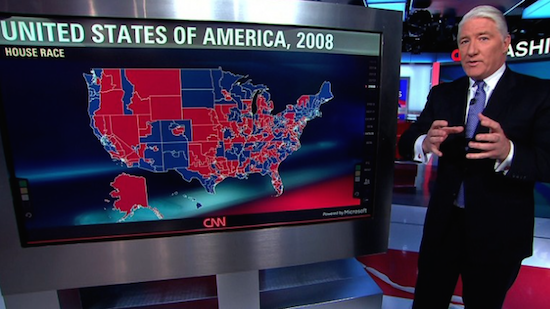For many, Labor Day marks the end of summer.
On Capitol Hill, it marks something else.
It s the end of the August recess and the "soft opening" of the midterm elections. This week begins an unseen shift in the dynamics of upcoming campaigns, potential retirements, and the number of seats that will be in play.
Democrats need 24 seats to gain the majority in a historically negative environment for Republicans. President Trump will be on the 2018 midterm ballot even though his name won t.
And in many respects, the race begins now.
For four years, I chaired the Democratic Congressional Campaign Committee (two-thirds of the gray hair on my head sprouted in that period). Our job was to elect House Democrats and defeat Republicans. That meant recruiting candidates, targeting districts, building campaign infrastructure, raising money, developing message and mobilizing field operations.
I considered Labor Day of the year before the election an important benchmark for several reasons.
First: Incumbent House members were home for the August recess and could read the mood of their electorate. Town halls, Rotary Club visits, and constituent encounters were like canaries in the coal mine. Members returned to Washington either chirping about a favorable climate or gasping about how bad it was. I remember walking into Long Island diners in the politically miserable month of August 2010. It wasn t that my constituents were hostile to me; they just seemed to be staring sullenly at their plates. That s when I knew we had problems.
Second: A month at home sometimes stirs thoughts of retirement for incumbents, potentially creating open seat opportunities. They may wait until Christmas or New Year s to make final decisions, but for many, August is when those thoughts first materialize.
Third: After Labor Day, candidate recruiting is practically over. There may be some stragglers, but most top tier candidates are on the hook and the initial battlefield of competitive districts is set. Today that battlefield looks more competitive for House Democrats than at any time since they lost the majority in 2010. Twenty-three Republican-held districts were carried by Hillary Clinton. These are the Democrats sweet spots -- areas where Democrats and swing voters are rejecting any affiliation with President Trump, and where the lack of legislative accomplishments will suppress Republican turnout.
House Republicans are not without their advantages headed into the 2018 midterm elections. While wins in high profile special elections are not necessarily indicative of a greater trend (many assumed in 2011 after Kathy Hochul won a special election in Upstate New York that Democrats would retake the House -- we didn t), the greatest handicap from which House Republicans benefit is a map that was rigged by gerrymandering. Despite this, several of my former Republican colleagues in the House have gloomily told me that they re bracing for a possible loss of their majority.
The next campaign filing deadline is September 30, which means that after a summer of leisure and travel by well-heeled donors, candidates have less than a month to collect their checks. These financial first impressions have a lasting effect into the fall. From my perspective as Chairman of the DCCC, a robust September filing by a candidate demonstrated early strength. Anemic resources showed me potential problems.
The midterm congressional arena will shrink and expand over the next 14 months. Some candidates will rocket to success and some will flame out. There will be surprises for both Democrats and Republicans: that unwinnable district that s suddenly close or that "safe seat" that s suddenly going south.
But for most candidates, that work truly begins this week. Success later requires hard work now.



